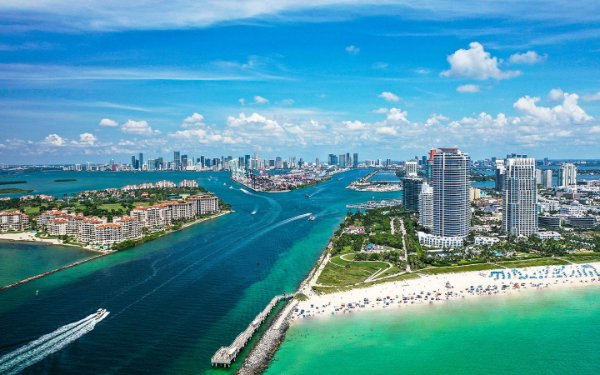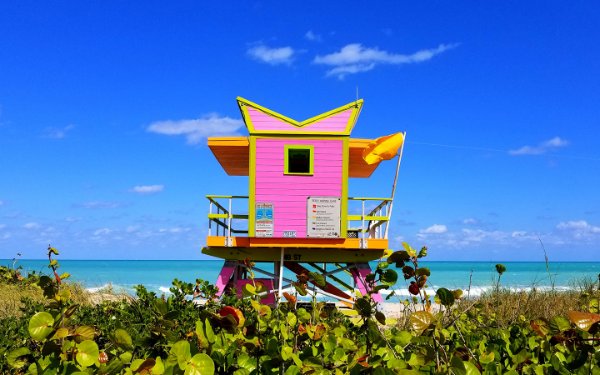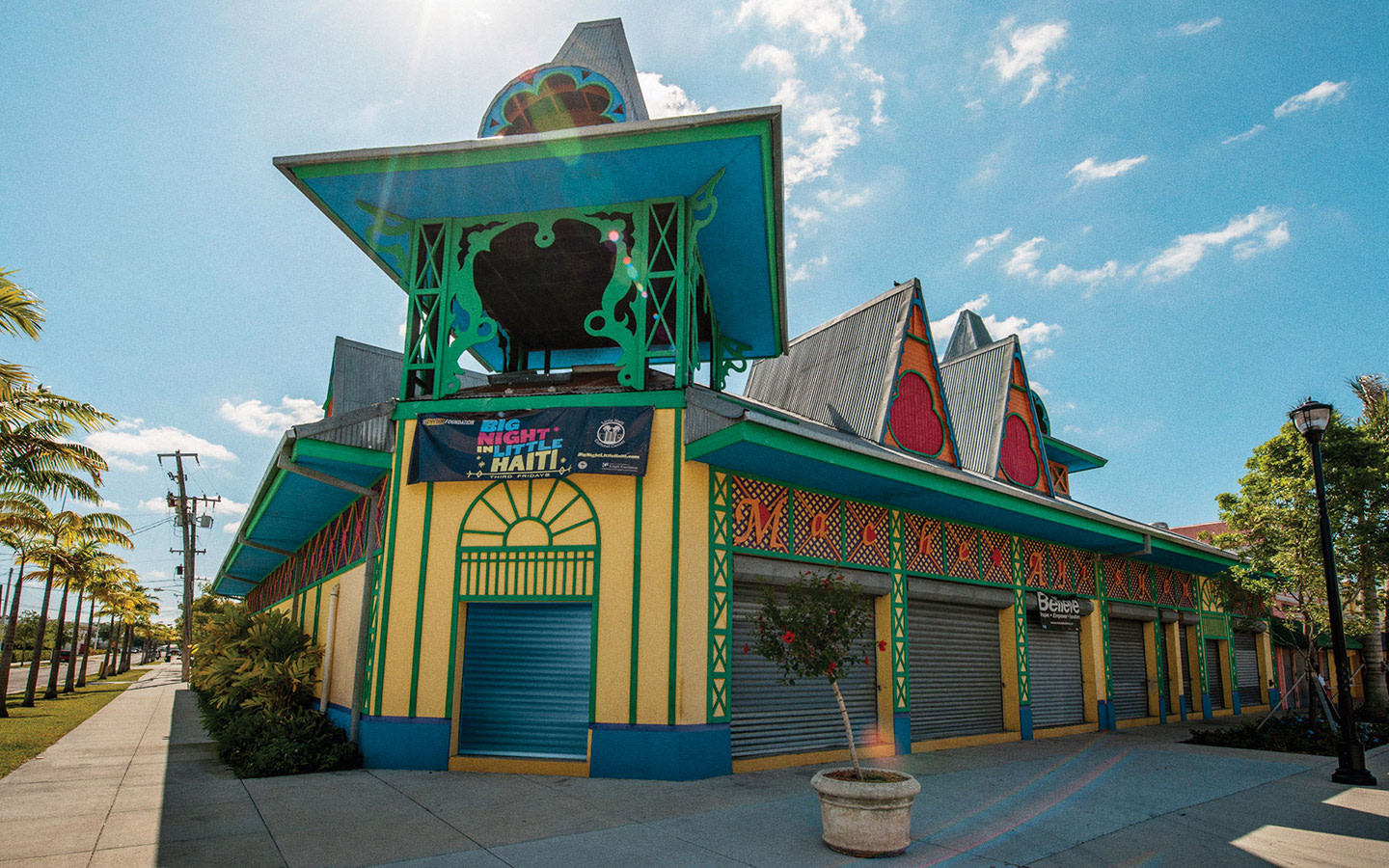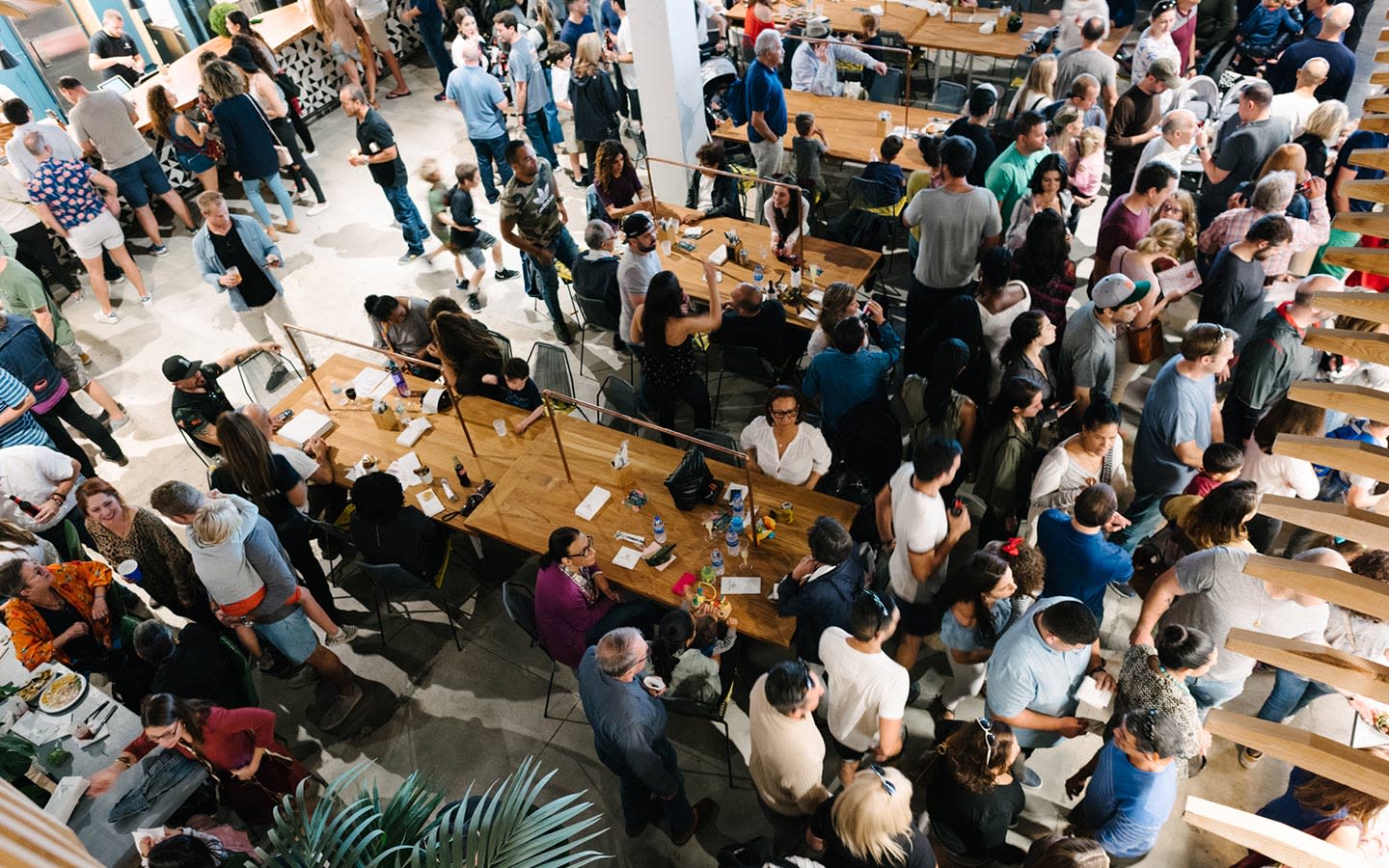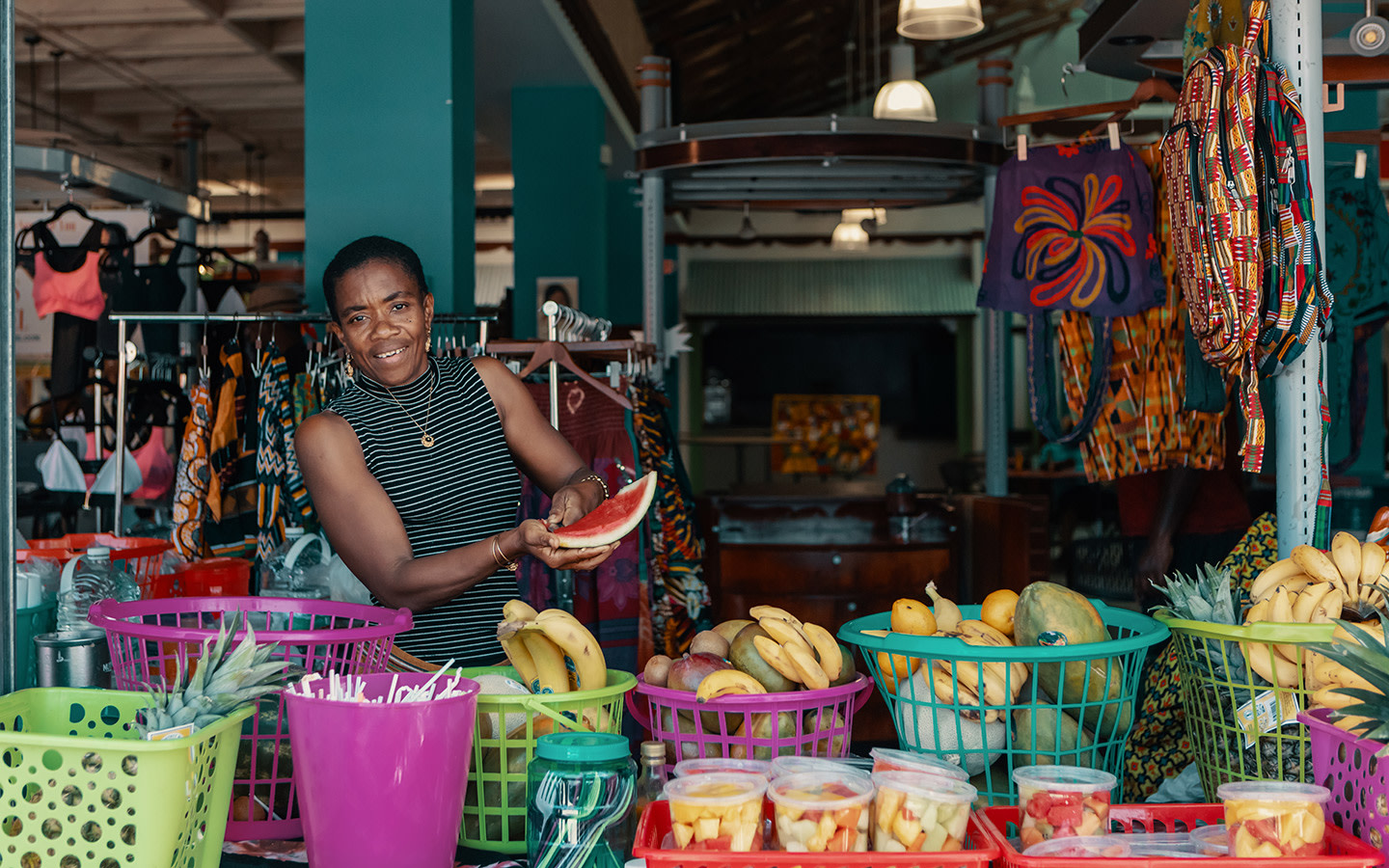Little Haiti is the heart of Greater Miami & Miami Beach’s Haitian community, where Kreyòl is spoken in the streets, restaurants and markets offer authentic Haitian cuisine, and shops and other buildings are painted pastel pink, blue, green and yellow. To get a true feel for the neighborhood, take Tap Tap Tours’ 90-minute La Perle De Miami: Little Haiti Tour by golf cart.
Little Haiti is home to artists, galleries, vibrant street art and cultural attractions such as the 9,000-square-foot Caribbean Marketplace, which replicates the Iron Market in Haiti’s capital city, Port-au-Prince. Here you’ll find Haitian and Afro-Caribbean arts and crafts, food and live music. Next door, Libreri Mapou is a bookstore, cultural center and gift shop that carries works by Haitian authors and books on Haitian history, politics and folklore, written in Kreyòl, French and English.
The community’s hub is the Little Haiti Cultural Complex (LHCC), home to the Caribbean Marketplace. Dedicated to preserving and showcasing Afro-Caribbean cultures, LHCC features an art gallery, dance studios, arts and crafts rooms, a courtyard for concerts and festivals, as well as a theater.
The neighborhood also houses contemporary galleries including Nina Johnson, Emerson Dorsch and Laundromat Art Space, a studio and exhibit space in a converted laundromat. The famous Sweat Records indie record shop sells vintage and hard-to-find LPs and holds concerts and other events.
Little Haiti is the place to go for authentic cuisine from Haiti and other Caribbean countries. At Chef Creole Seasoned Kitchen, sample signature Haitian seafood dishes, plus diri ak djon djon (black mushroom rice), and griot (fried pork) with pikliz (spicy cabbage slaw). You’ll find fresh pen kreyòl (Creole bread) and flaky Haitian patties filled with cod or beef at Piman Bouk Bakery. The Citadel, a block-long food hall and market with a rooftop lounge, offers local artisanal foods, handcrafted cocktails and sustainable shopping.



